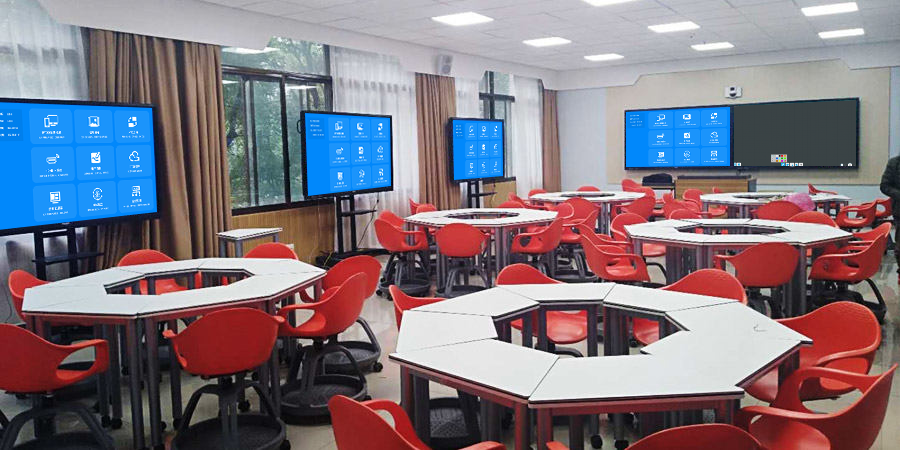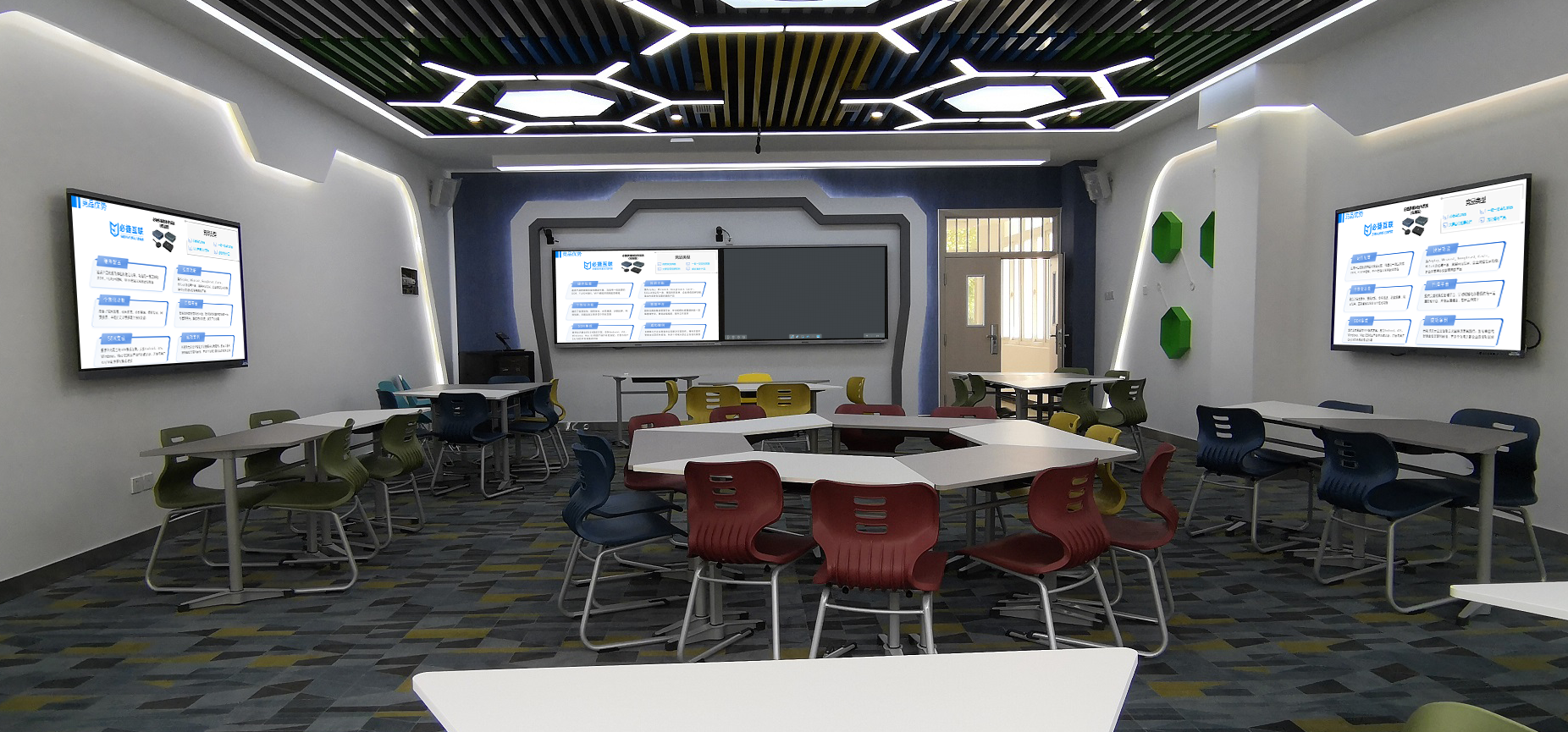Multi-Screen Collaboration: Devices Working Together, More Efficiently
Want to break free from the limitations of your computer, phone, tablet, and big screen working in silos? This screen mirroring device makes it easy to set up a multi-screen collaboration environment. It supports real-time content flow, two-way control, and synchronized annotations across devices. This is great for office teamwork, family sharing, and educational training. Without any complicated setup, it transforms multiple screens from “independent operations” to a “unified effort,” boosting both efficiency and user experience.
Set Up a Collaborative Scene in One Minute
The process is so simple that people of all ages can do it:
- Quick Device Network: Connect the receiver to the main screen (conference screen, TV, or projector). If you need secondary screens, connect additional receivers as needed. They will automatically be assigned an identifier (e.g., “Main Screen – Presentation,” “Side Screen – Data”). Plug a transmitter into your computer, and make sure your phone and tablet are on the same Wi-Fi network (or the device’s hotspot if there’s no Wi-Fi). All devices will be interconnected in just 10 seconds.
- One-Click Collaboration: On your computer, click the “Collaboration Mode” button on the device’s interface. On your phone or tablet, scan a QR code to confirm. The screens will sync instantly. Content can then be moved freely between devices, and you don’t need to install any software. A beginner can get it working after just one try.
Key Advantages: Deeper Multi-Screen Collaboration
Seamless Content Transfer, Breaking Down Device Barriers
- Instant Material Transfer: A single click on the device’s “cross-device transfer” feature can send documents from your computer, photos from your phone, or mind maps from your tablet to other screens. This eliminates the need for USB drives or messaging apps, boosting file transfer efficiency by 70%.
- Complementary Screen Displays: The main screen can show core content (like a meeting agenda or a lesson plan), while a secondary screen can display supplementary materials (like data charts or a video). Your phone or tablet can then be used to add real-time details, providing a more comprehensive view of the information and avoiding “single-screen information overload.”
- Collaborative Editing: Start editing a document on your computer, then use your tablet to add annotations and your phone to add text notes. All changes are synchronized across all screens in real time. This streamlines teamwork, eliminates the need for constantly sending updated files, and avoids “version chaos.”
Two-Way Control and Interaction
- Cross-Device Control: After casting content from your computer to the main screen, you can use your phone to remotely flip pages, pause, or add notes. When a design is displayed on a tablet, you can use your computer to pull up reference materials and send them to the side screen. Your control isn’t limited by your location.
- Real-Time Annotation: During a discussion, multiple people can annotate details on different devices (e.g., a chart on the computer, suggestions on the phone). The notes sync in real-time across all screens, so everyone can contribute without huddling around a single device. Remote collaboration feels like you’re in the same room.
- Dynamic Data Sync: In a training session, participant answers and feedback are automatically compiled and displayed as a chart on the main screen. This gives the instructor a clear view of everyone’s progress, so they can adjust the pace of the lesson.
Full-Device and Full-Scene Compatibility
The device is compatible with Windows, macOS, iOS, and Android systems. It has a compatibility rate of over 98% with major brands like Lenovo, HP, Apple, and Huawei, so even older devices can collaborate smoothly.
It supports three collaboration modes: Mirroring (full-screen sync), Targeted Casting (send specific content), and Split-Screen Display (show multiple content sources at once). You can switch between these modes to fit different scenarios.
Real-World Scenarios: Multi-Screen Collaboration in Action
Office Teamwork: Double the Efficiency
During a project review, one person casts the main framework from their computer to the primary screen. Another uses their tablet to add notes, and a third uses their phone to snap a photo of a competitor’s product to add to a secondary screen. All content is synchronized in real time. When there’s a disagreement, the presenter can use their phone to zoom in on details on the main screen. This makes it possible to complete three rounds of project optimization in just one hour, boosting efficiency by 50% compared to traditional meetings.
In a remote meeting, a local team can use a “main screen + side screen” setup to present their plan, while remote team members join the collaboration on their phones or computers, adding notes and asking questions in real-time. This makes cross-location communication feel seamless.
Family Sharing: A Warmer Atmosphere
At a family gathering, everyone can take turns casting travel photos and home videos to the TV (main screen), while a tablet plays background music. A computer can also cast old photos to a side screen, creating a “family memory exhibit.” The older generation can use their phones to control the photo slideshow, making sharing more enjoyable.
When a child is taking an online class, they can cast the lesson from a computer to the TV (which is better for their eyes), take notes on a tablet, and look up information on a phone. The parents can use their phone to pause the lesson and answer questions, which helps the child stay focused.
Training and Education: Deeper Engagement
An instructor can cast a presentation from their computer to the main screen, use their tablet to annotate key points, and push quizzes to students’ devices from their phone. Student answers are automatically compiled into a chart on the side screen, allowing the instructor to review common mistakes and tailor their lesson.
In a practical training session, the main screen shows the step-by-step instructions, while the side screen shows close-up details. Students can use their phones to take photos of their work and upload them to the side screen, and the instructor can add notes on the main screen to guide them without having to check each person’s device.
Practical Details: A Convenient Daily Helper
- Stable and Interference-Resistant: Using dual-band (2.4GHz + 5.8GHz) transmission, the latency is ≤15ms during simultaneous collaboration, and the disconnection rate is less than 0.1%. This ensures no “fails” during important meetings or training sessions.
- Privacy and Security: The device supports “collaboration permissions,” allowing only authorized devices to join a group. Content is encrypted during transfer, protecting confidential work data and personal photos.
- Portable and Easy to Store: The device is small enough to fit in the palm of your hand and weighs less than 40g. You can easily slip it into your laptop bag for business trips or training sessions, allowing you to set up a multi-screen collaboration environment anywhere.
Whether it’s for office collaboration, family sharing, or educational training, this device makes multi-screen teamwork simple, smooth, and efficient, truly unlocking the potential of working together.